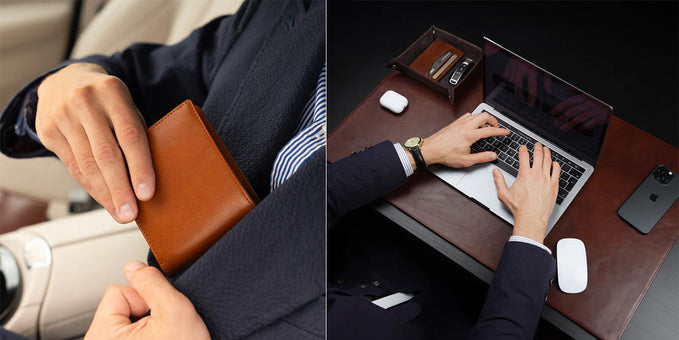Briefcase History – Who Invented the Briefcase?
There are several different types of briefcases on the market today; traditionally a briefcase is narrower than most other bags and has a hard shell.
Briefcases are typically carried by a handle but now many come with a shoulder strap as well allowing you to carry it in two different ways. In the past briefcases were associated with white collar professionals who used them to carry important documents from home to the office.
In fact, the name briefcase came about because lawyers used them to carry court documents known as briefs. More modern briefcases come equipped with extra pockets and internal padding that help to protect laptops and tablet computers. While you can still find briefcases with only one large internal space, many briefcases now also have features that help people stay organized such as accordion style dividers, subsections, specialized compartments, and small internal and external pockets.
Nowadays you can find briefcases in a wide variety of materials including fabric, leather, vinyl, plastic, and even thin metal. Often briefcases will come with a small lock, giving people the ability to keep their important items a little bit safer.
The History of the Briefcase
People have been using briefcases or bags of some type or another for centuries; in fact, briefcases have a very long and interesting history. People in the fourteenth century used a satchel type bag to carry their valuables. This type of bag was called a ‘budget’ which was derived from both the Latin word for leather bag (bulga) as well as the Irish word for leather bag (bolg).
In 1826 we saw the introduction of a hinged iron frame on a carpet bag when Godillot of Paris began to carry one everywhere he went. Next came the Gladstone bag, which was similar to the modern briefcase, a type of rigid suitcase that could be separated into two sections. Then the Rosebury bag became popular, which also had a rigid structure, but the top was oval. In the late 1850’s the narrow, rectangular bag that we now know as a briefcase was invented and became popular worldwide. Today people still carry briefcases and they have become a sign of professionalism in the workplace.
Types of Briefcases
There are a few different types of traditional briefcases:
- A portfolio is meant to be carried under the arm as it does not have a handle.
- A folio case looks exactly like a portfolio, but it comes equipped with a retractable handle.
- An attaché case (aka diplomat case) is a rectangular box-style bag. An attaché case is made of leather and open into two sections. It is called an attaché case because it was traditionally carried by an attaché (diplomatic officer).
- A catalog case or catalogue case is a larger and deeper attaché case.
More modern briefcase types include the laptop briefcase (link), designed to hold laptops and macbooks, as well as messenger briefcases (link) which come with a shoulder strap.
Best Material for Business Briefcases
For the majority of people, leather will be the best material for business briefcases - which is why we use it in our bags.
This it's because it's both durable, and very professional in appearance.
If you aren't fashion conscious, then choosing a fabric briefcase may be a good option for you, but for those who care about style, it's important to choose leather.
What Type of Leather is Best?
The best type of leather for your briefcase is full grain leather.
That's because it uses the top hide, which is the part of the animal exposed to the outside world, meaning it's the toughest leather type that ages really well with natural leather patina.
Shop full grain leather briefcases here.
How to Care for Your Leather Briefcase
We also stock premium leather cream here.

Author: Albert Varkki
Albert Varkki is the co-founder of Von Baer. He understands leather products as a consumer, supplier, and a manufacturer, helping you with the inside knowledge you need, to choose the perfect leather product for you.
We strive for the highest editorial standards, and to only publish accurate information on our website.
Leave a Comment
Your email address will not be published.









